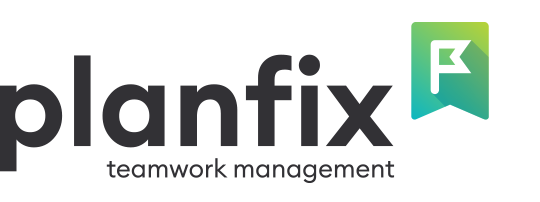
Companies will typically consider implementing Customer Relationship Management (CRM) systems at different stages of their growth. But whether it’s scaling up the business, organizing and storing data, sorting out team communication issues, or automating business processes, the benefits of a CRM system are undeniable. According to The State of Sales Report 2021, over 70% of companies plan to invest in the development and implementation of a CRM system within their organizations.
This article explores the resources and investment needed for CRM implementation today.
Understanding CRM Investment
Investment in a CRM system includes financial and non-financial resources that will be used for its implementation and ongoing support. CRM costs include purchasing the software, configuring and integrating existing systems, training employees, data management, and regular maintenance. These investments aim to improve customer relationships, increase efficiency, optimize processes, and ultimately increase business growth and profitability.
Let’s examine the specific costs associated with investing in a CRM system:
- CRM Software: Options include licenses or subscriptions. The initial cost depends on the licensing type and the number of users.
- Hardware: Servers, computers, and any other equipment your employees need.
- Internet Connection: Reliable, uninterrupted internet access is essential for cloud-based CRM systems or updating desktop software.
- Integration with Services and Programs: Software or services are needed to integrate CRM with existing systems, such as ERP or accounting software.
- Customization and Integration Services: Developers or integrators who customize and implement the CRM to meet the company’s specific needs and goals. When choosing a CRM system, consider whether you have the expertise to set it up yourself or need to seek an external integrator. Alternatively, you can opt for customizable systems to adapt your business processes without external help.
- Training and Onboarding: Training employees to use the CRM effectively. Most CRM developers offer free online courses, video tutorials, and reference material. In some cases, however, there may be a charge for training, so this cost should also be considered.
- Data Management and Administration: If required, managing the software, setting up backups, and working with databases.
- Security: Software solutions and services to protect cybersecurity protocols and company data.
- Analytical Tools: Software for analyzing CRM data and generating reports. Consider these costs if your company works with large data sets or integrates them with other systems.
- Backup and Recovery: Strategies and tools for data backup and recovery in the event of system failure. For cloud CRM users, these costs are usually irrelevant, as the data is stored in the cloud and backups are usually included in the price of the SaaS product.
These resources collectively promote the successful implementation and ongoing management of a CRM system and increase its value for an organization.
What Does a Customer Relationship Management System Do?
The main goal of any Customer Relationship Management (CRM) system isn’t just to enable interaction with current and potential customers and optimize coordination between different teams. A CRM can also serve as a central hub for various business processes, such as:
- Centralized Data Storage: it serves as a central storage for all customer data, from contact details to communication history and agreements.
- Company-wide Coordination: A CRM system centralizes the activities of the different departments—sales, marketing, finance, and logistics—and thus ensures the transparency of business processes.
- Sales Process Management: From lead generation to product delivery, CRM tools optimize sales processes by tracking potential customers, managing sales pipelines, automating tasks, and providing real-time data and analytics to increase team productivity.
- Customer Support and Post-Sale Service: Handle customer requests directly in the system, communicate with customers, and set up a multichannel communication framework.
- Workflow Automation: Automating routine tasks increases work efficiency and reduces the likelihood of errors.
- Reports and Analytics: The ability to generate various financial, employee, customer, and sales reports.
- Team Collaboration: Working in a unified system improves coordination and ensures a consistent approach to customer interactions.
- Marketing Automation: Helps companies engage with customers at different stages of the customer journey.
The above features are just a fraction of what integrating a CRM system into your business processes can cover.
Key CRM Requirements
Before you decide on a CRM system, you must know your company’s specific needs and goals, including what customer data you need, how you can optimize your business processes, and what you want to achieve with the CRM implementation.

Here are some essential CRM system requirements you should consider:
Business Requirements
Determine your business’s specific needs and goals, including the customer data to collect, the business processes to be streamlined, and the overall objectives for the CRM implementation.
Functional Requirements
Determine the functions and features of the CRM system your company needs. These may include lead management, contact management, sales automation, marketing campaign management, customer support tools, reporting and analytics, integration capabilities, and customization options.
Scalability Requirements
Make sure the CRM solution can scale as your business grows. Scalability means it can handle an increasing amount of customer data, users, and transactions without sacrificing performance. It also means the ability to add new features, modules, or integrations as your business evolves.
By focusing on these essential CRM requirements, you can choose a CRM system that suits the needs of your business, increases operational efficiency, and supports future growth.
What Resources Are Needed for Customer Relationship Management?
The costs involved in implementing a CRM system can be divided into two categories: costs for the CRM solution and IT investments. Let’s examine these categories more closely and see how companies can optimize budget allocation.
CRM Pricing
There are several types of standard pricing plans for CRM systems:
Free Plans
Free plans usually include basic features suitable for individuals or small teams. Planfix, for example, offers a free plan that is ideal for small teams and companies in the start-up phase.
Starter plans
Starter plans offer more advanced features but are limited in the number of users or features they allow. Unlike other solutions, Planfix’s Plan A covers the automation of all business processes, not just customer interactions.
Premium Plans
Premium plans offer a full range of features for larger businesses, often including additional services and support. Planfix’s Plan B is ideal for medium-sized companies with up to 250 employees.
Enterprise Plans
Customizable plans, often with advanced features, high-security levels, and sometimes with individual support. Planfix’s Plan X is unique in offering extensive features and flexible licensing for 6+ users.
Many developers, including Planfix, offer a trial period. This trial period allows potential users to familiarize themselves with the system’s features before purchasing. It enables them to evaluate how well the CRM meets the business’s needs, how easy it is to use, and how practical the tools are.
IT Investment
As mentioned earlier, choosing a CRM system may require IT investment, such as purchasing CRM licenses and subscriptions, integrating the CRM with other systems and applications in the company, customizing the CRM to meet specific business needs, training employees on the new system, and ongoing support and updates.
Many companies prefer SaaS CRM systems such as Planfix CRM to minimize IT investments and hardware costs. This license model enables streamlined data access and remote CRM operation, helps manage IT resources flexibly, and reduces costs.
Subscription payment models reduce initial implementation costs and provide more predictable expenses, and CRM developers’ continuous updates and technical support ensure that the software is reliable and up-to-date.
Tips for Minimizing IT Investments
Investing in a new CRM system may seem like a stretch for small companies or start-ups. We’ll show you how to minimize your IT investments and optimize your budget for CRM implementation.
Determine your needs. Start by assessing your current IT infrastructure and identifying the areas that need investment. For many small companies, a basic version of a CRM system is initially sufficient. However, consider whether your CRM system can grow with your business. Planfix CRM is a flexible system that can adapt to your business’ growing needs.
Prioritize Your Investments. Organize your IT investments according to priority tasks and strategic goals. For example, determine the correct number of licenses to avoid excessive costs.
Explore Alternatives. Check alternative solutions like cloud services, outsourcing, or software-as-a-service (SaaS) models. These options usually require less initial investment and offer scalability as your business grows.
Optimize Existing Resources. Maximize the use of existing IT resources by integrating effective workflows and automation tools. Proper resource management can significantly increase efficiency and reduce costs.
Train and Develop Skills. Investing in in-house specialized training can save you from hiring outside integrators and developers later. Look for free programs and certifications offered by the software developers themselves.
Manage Costs. Many software providers offer special deals and discounts for long-term payments, such as annual subscriptions. Bundled packages and special pricing can also help reduce investment.
Stay Flexible. Use flexible methods and IT infrastructures to adapt quickly to changing business requirements without significant additional investments.
These are just a few strategies to help optimize expenses and develop a flexible and adaptable IT strategy.
Why Choose Planfix CRM
Planfix isn’t just a CRM system but a comprehensive business toolkit for managing tasks, projects, teamwork, and customer interactions:

- A wide range of free courses, videos, and reference materials.
- Free customer support with multichannel communication options, e.g., directly from the system or via email and popular messengers.
- Flexible pricing allows you to purchase as many licenses as needed and add more later if required.
- A free version of the platform is ideal for small teams and start-ups.
- Minimal hardware requirements: Your team only needs devices to access the system, and Planfix handles all server details.
- Support, backups, and security are not additional costs—Planfix covers these areas and they are included in the license cost.
- Over 400 integrations with popular software and applications.
- Planfix API for advanced users that enables custom integrations.
- The ability to customize and refine the solution without requiring programmers or integration companies.
- Planfix is a CRM transformer with a user-friendly interface that grows with your business.
There are many more benefits, but the best way to experience the full functionality of Planfix CRM is to try a fully functional trial version.
FAQ about CRM
What Is a CRM Investment?
CRM investment involves allocating financial resources for the purchase and implementation of customer relationship management systems, software, and additional tools.
These strategic investments aim to improve customer interaction, optimize business processes, and increase operational efficiency.
What Types of CRM Are There?
Types of CRM systems include operational CRM, which focuses on automating customer interactions
such as sales, marketing, and customer service; analytical CRM, including data analysis for customer insights and decision-making; and collaborative CRM, which facilitates communication and collaboration between departments and improves interactions and customer relationships.
Why Is it Essential to Invest in CRM?
CRM investments are essential for companies of all sizes. The aim is to effectively manage customer relationships, increase customer satisfaction, and boost sales.
CRM enables companies to understand customer needs, personalize interactions, optimize processes, and make data-driven decisions. Ultimately, this leads to better customer retention, loyalty, and long-term business success.
Final Thoughts
We have examined a CRM investment and a CRM system’s requirements for successful implementation in an organization. Successfully integrating a new solution into your business processes doesn’t always require an extensive financial commitment. For small companies, for example, it’s optimal to start with a basic version and expand the functions of the CRM system as the company grows. Planfix’s business process management system offers a free version — sign up now and discover the benefits of the platform.

